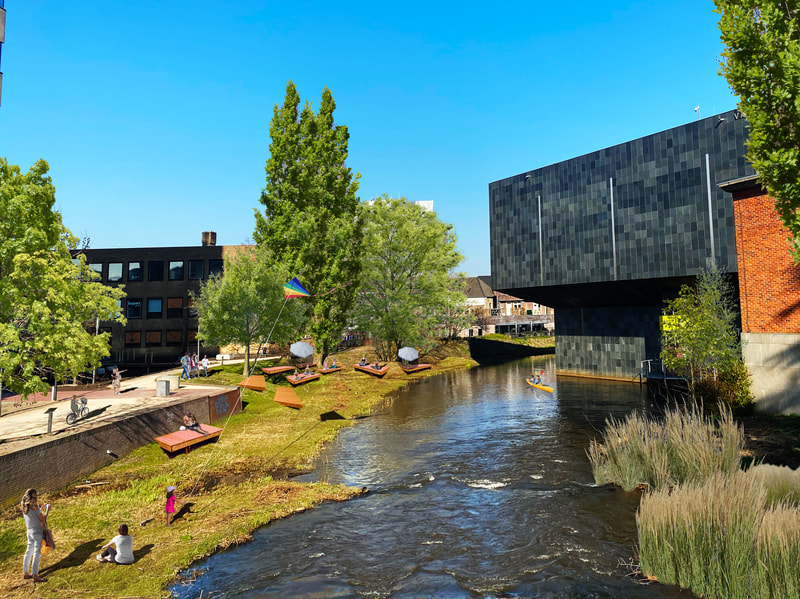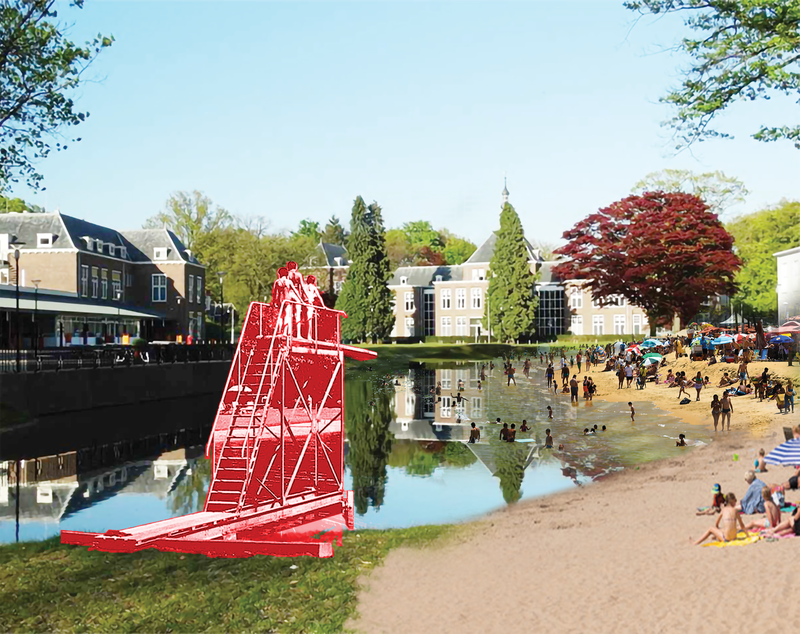Design & ServicesWe work in service of communities in transformation. In order to explore and enjoy the uncertainties of our present, we need to envision more desirable, shared and inclusive futures. This needs committed and careful observation and analysis of the present. It needs visionary and speculative approach to societal transformations, and the ability to plan and take transformative actions that connect the social and spatial changes. This is why the Studio’s projects are always research-based, value-driven and collaborative, involving stakeholders and experts alike, and connecting the smaller and larger scales. The design process is structured in four parts.
Every project is different, so at the start of every collaboration it is important to define a strategic approach. In general, the studio's design process contains four parts, each of step fulfils a distinct purpose and delivers specific outcomes and values to our projects. Over the years, we've developed and tested a library of methods and tools for each of these steps in the process. |
1. Research & AdviceHow can we understand the present situation, so that we can inspire new ideas and imaginations of the future?
Spatial and community research with attention to value-driven future transformations.
Spatial transformation is a complex process situated between multiple systems and actors. The set up the foundation of meaningful transformations, we need to read the place in relation to the transformative goals, and the way the organisation and its community relate to and perceive the site. How far is the place in its journey towards transformation, what has been tried, who are the key stakeholders, what physical qualities and conditions. Resulting in a visual report identifying the challenges, opportunities and cross over that should be addressed in the site's (future) development. |
2. Participatory Actions & ExperimentsWho do we need to involve in the transformation process?
When and how is the right way to do so? How can we engage the community in the transformation as early as possible? Participatory actions, are a great way of testing ideas and approaches out in practice, on-site and with the stakeholders
Transforming a place inevitably affects its people. Likewise, the people can add much to the development of a place. For this it is crucial to formulate a role for the community in the process that fits their values, needs and capabilities. Time, the duration of stay, as well as social and spatial needs of people play a crucial role in determining the right engagement approach. Understanding the community and its values, can help find a fitting approach and role for them in the transformation of the place, resulting in a tool or strategy of community engagement that falls naturally with the conditions of the place and the needs of the community. The Stadsoever shows what is possible when this is approached as an outdoor event series, while the Moral lab is a great example of how to do this through a dedicated spatial installations. 3. Future ScenariosWhat future narratives and aesthetics are possible, preferable and desirable?
What do they look like at the level of the organisation, community and system at large? Exploring alternative visionary scenarios for the future of a space or community
Exploratory research through scenarios is a proven method of envisioning the future transformation of places and communities. Alternative scenarios that make it possible to compare the possible future outcomes. When many futures are possible, we need to define which ones are plausible and preferable. The scenario design brings in a visual and tangible way the answer to 'what if?' questions that can unlock a spatial decision-making process. This is how we can give shape to the end result the transformation should lead to. The Future scenarios for De Grote Beek and Envisioning the Anthropocene show two approaches for developing alternative future visions. |
4. Strategy for Transformation & InnovationWhen transformations take several years, how can we maintain the vision and strategic approach? How can we ensure continuity, when the team and organisation changes?
Devising spatial and community strategies for transformation
Knowing the desired future of places and communities can be defined through scenario design. But How to get there, requires a strategic design approach, translating the vision to specific tactical steps of transformative process. The socio-spatial strategy method is especially effective in guiding decision-making in the near- and long-term future. In this way, actions in the short-term can be connected to the long-term vision. This method of spatial transformation is based on embedded learning, so that the lessons and insights gathered through the early stages of a transformation can inform and contribute to the long-term vision. A great example of this is the Playbook for Healing environments, published in 2021 on commission by GGz Eindhoven, to help inspire and guide the complex spatial transformation. |















